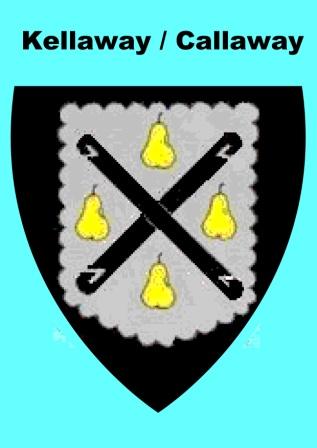THE MANOR OF ROCKBOURNE |
ROCKBOURNE KELLAWAY Tree ROMESEY BINGHAM Tree (New Windows) |
 |
THE MANOR OF ROCKBOURNE |
ROCKBOURNE KELLAWAY Tree ROMESEY BINGHAM Tree (New Windows) |
 |
THE VILLAGE and CHURCHThe pretty village of Rockbourne, Hampshire lies about 10 miles south of Salisbury and 3 miles NW of Fordingbridge. The main street runs approximately North to South and is bordered on the East by a stream called Sweatfords Water.At the North end of the village near the Village Hall a footpath leads up to the Parish Church of St Andrew on a small hill beside the old Manor buildings which are now incorporated into a modern house and farm.
The Church has been on this site for about 900 years. Additional building and extensions took place in each centuary from that time. The death of Francis Keilway is recorded in the parish register in February 1601/2 and in his Will Francis Keilway wished to be buried in the “parish Church of Rocborne in the South Ile there Item I give to the parish church of Rockborne fortie shillings and Item I give to the poore of the saide parish three pounds to be disposed by the overseers of the poore..... Also my will is that my executors see the saide Ile well dressed up with a new glass window throughout, and my tombe to be there made and my Armes to be sett in the windowe at the discrecion of my executors.” Subsequent repairs and alterations have obliterated all signs of this and other early monuments with the whole bulding now principally containing monuments to the Coote family THE MANOR
The Manor of Rockbourne, formerly a royal manor, was granted to Manser Bisset in the time of Henry II (1154-1189). It passed through several generations to John Bisset who died unmarried in 1334. The manor passed to his sister Margaret who was married first to Walter de Romesey. The manor then passed to the son Walter de Romesey (1325-1403). This Walter and his wife Alice Filliol had a son Thomas who died 1401 leaving two sons Thomas and Walter. Thomas had one daughter Joanne married to Thomas Payne. Walter d.1428 having one son Walter d.1430. Thus the manor passed to Joanne Payne and when she died in 1448 her heir was found to be Joanne Bingham daughter of Mary de Romesey and Thomas Bingham. Mary was a daughter of Walter de Romesey and Alice. Joanne Bingham first married Thomas Kellaway and had a son John and 3 daughters. Thomas Kellaway died 1420 and by 1422 Joanne was married to Roger Wyke with whom she had a son John Wyke. Thus the Bingham inheritance passed in 1448 to the Kellaway and Wyke lines. Joan Bigham settled some property on the descendents of Thomas Kellaway, her first husband. Sir William I Kellaway was living at Rockbourne by 1488. He was grandson of Thomas Kellaway and Joan Bingham. The manor passed to his son Sir John, and Grandson Sir William II Kellaway. (1470-1547). It is at this time that the family decline began because Sir William′s son Francis Kellaway MP squandered his inheritance and fought with his siblings over the estates and with his son Thomas. He ended in debt with Rockbourne heavily mortgaged to Sir Anthony Ashley. The House of Commons History has interesting background material on Francis Keilway which throws light on his character: In the History Of Hampshire it is reported: His father, with whom he had quarrelled, was ordered to pay for him as a ‘gentleman pencioner’, but in 1598 Thomas being ‘utterlie lame and a creeple’ complained that since his father had again cut off his allowance he was ‘inforced to use very hard and base shiftes even for his foode and sustenance in such sorte as it is pitiful to make mencion.’ The Privy Council took the case in hand and ordered Francis to allow his son £3 weekly. Refusing to obey, Francis for a long while ignored their letters, but finally agreed to pay his son′s debts and to allow him to ‘lyve in house’ with him. Francis died in 1601-2 and Thomas succeeded to Rockbourne, which, already heavily mortgaged to Sir Anthony Ashley, he sold in 1608 to Sir Anthony′s son-in-law, Sir John Cooper. No sooner had this sale been effected than it was found that Francis had in 1574 settled the contingent remainder of the manor after himself and his heirs male on his brothers Ambrose and Edward, and that the latter ‘of an ill intent’ to prevent the sale of the manor had granted his interest in it to Queen Elizabeth in 1594. James 1, however, ‘not myndinge to favour such fraudulent conveyances,’ gave up all ‘remainder and interest’ in the same in 1608. Sir John Cooper was succeeded by his eldest son Anthony Ashley Cooper, created Earl of Shaftesbury in 1672 and the manor has descended with the title.
| |||||||||||||||||||||||||||
back to Kellaway Research index
©Lesley Haigh 2015